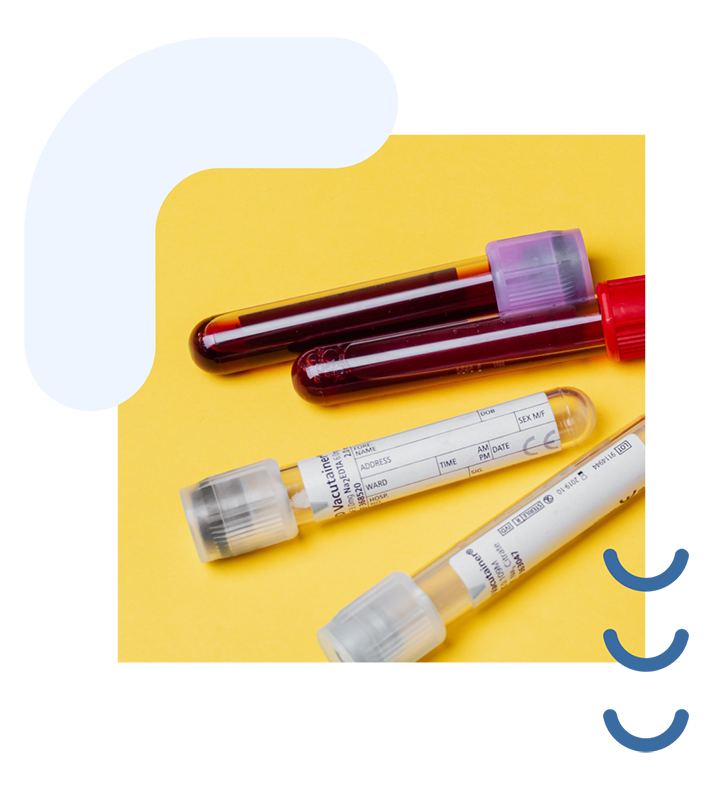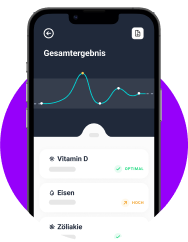We always want to be informed about our health. Regular check-ups, a balanced diet and daily exercise help our bodies to stay healthy and function better.
Protection and knowledge are particularly important if we fear a possible infection with a virus.
We address what is a taboo subject for many people openly and comprehensively, as education in all areas of health is a top priority and should not be concealed under any circumstances.
Love is one of life’s many advances. It enriches, inspires, strengthens and connects us. Nevertheless, it harbors a few dangers that we should protect ourselves from for a carefree and carefree love life. Infection with a sexually transmitted disease can happen faster than you think and can often go undetected for too long.
The HI virus poses the greatest threat to our health and can be life-threatening in some cases. Are you worried that you may have contracted the virus or would you like to protect yourself before entering into a new partnership? Do not hesitate and take an HIV test.
You can find out everything you need to know about HIV tests in this article.

First of all, it is important to know how the HI virus gets into your body and how it can weaken your immune system. “HIV” stands for “Human Immunodeficiency Virus”. The virus is a retrovirus and can incorporate its genetic material into the genetic material of the infected host cells. The HI virus primarily attacks the T helper cells, which weakens the immune system of the affected organism.
As a result, the body is much more susceptible to diseases that are unproblematic and essentially harmless in uninfected people.
The danger lies in the late detection of an infection and the possible development of AIDS. If an infection with the HI virus is not treated, it can lead to AIDS, the so-called “Acquired Immunodeficiency Syndrome”.
It poses a serious risk to human health, as the immune system is severely weakened and pathogens can easily enter the body. Infected people often suffer from pneumonia and fungal diseases.
There are various ways to become infected with the HI virus.
HIV is one of the STIs, the sexually transmitted infections. In many cases, infection therefore occurs through unprotected sexual intercourse.
There is a risk of being infected with the HI virus here. However, concerns are only justified if you do not know the HIV status of your partner or if it is known that one of the persons involved carries the virus.
Unprotected vaginal and anal intercourse are particularly risky. The risk is already significantly lower with unprotected oral sex, but infection cannot be completely ruled out. There is also a low risk of infection when ingesting blood and semen in the mouth.
An exuberant love life with many changing sexual partners increases the risk of infection immensely. In such cases, you should always check each other’s HIV status before having sex and use safe protection.
If HIV-infected blood enters your bloodstream, there is a high risk that you will become infected with the virus. For this reason, only clean cutlery should be used for a blood transfusion.
The risk of HIV infection is particularly high among people who regularly use drugs. If you use drugs intravenously, you should always make sure that you do not share the syringe with anyone else.
In many cases, an infection is discovered much later than would actually have been possible, as the initial symptoms are understood to be harmless and mistaken for harmless flu symptoms. This is because the symptoms only become more severe in later phases, as the virus spreads more widely in the organism.
The common symptoms – with decreasing probability – include the following:
With appropriate treatment, infected people can live for a long time without contracting AIDS. A positive test result is required for treatment to be possible. If you have concerns about your HIV status, do not hesitate to have an HIV test. There are many different options open to you.
An HIV test is the only way to find out if you have HIV. There are different types of HIV tests, which are carried out in different ways. You can take a test anonymously, with advice from test centers such as AIDS service organizations, health authorities or checkpoints and from your family doctor.
An HIV test always involves a blood test.
During a laboratory test, your doctor will take blood from you, which will be sent to a laboratory for analysis. This is an antigen-antibody test in which your blood is examined for antibodies and components of the HI virus. An infection can only be reliably detected six weeks after the risk contact. You will receive the test result after two days.
Rapid tests are usually carried out in counseling centers. A drop of blood from your fingertip is examined here. This is an antibody test, which means that your blood is only tested for antibodies against the HI virus. A reliable statement can only be made three months after the risk contact. You will receive the test result after approx. 30 minutes.
The self-test is a quick test that you can carry out privately at home. For many people, this is the most comfortable option. Again, take a drop of blood from your fingertip. Here too, a reliable statement can only be made three months after risk contact. You will usually receive the test result after 15-30 minutes.
However, self-tests can provide inaccurate results. Here you should pay close attention to the CE mark and only use approved tests.
An HIV test only makes sense if you are very uncertain about your HIV status or that of your partner, if you have an active sex life with changing partners or if you notice abnormal changes in your body.
If you notice any of the above signs, it is advisable to get tested for HIV. If you have had a high-risk contact, you should definitely take an HIV test as a precaution. Pregnant women are also recommended to take an HIV test as a precautionary measure, as there is a risk that the baby will become infected with the virus while still in the womb.
If you regularly use drugs intravenously with other people, an HIV test can give you a clear picture of your health status.
If you receive a positive test result, a second confirmation test with a new blood sample is always necessary. Appropriate treatment of the infection can only be initiated after double confirmation.
If the test result is negative, you should also have a PCR test carried out. In the event of an infection, this test is positive 1-2 weeks earlier than an antibody test and can correct a possible false negative result.

You have the option of taking pre-exposure prophylaxis (PrEP) to prevent HIV. This is a preventive medication in which you regularly take medication that reduces the amount of virus in your blood. HIV is therefore neither detectable nor transmissible.
Such treatment makes sense for people with an increased risk of infection. The treatment is covered by statutory health insurance. People who take this treatment must be tested for HIV before starting prophylaxis, four weeks after starting treatment and then every three months.
On the other hand, there is post-exposure prophylaxis (PEP). This form of treatment makes sense if your risk of infection is very high. Here, too, you will be given appropriate medication, which you must take within two hours at best and no later than 48 hours after the risk contact. The spread of HIV can thus be prevented at an early stage.
It is important to note that if the virus is detected early and treated appropriately, your life expectancy is just as high as that of the general population. People undergoing treatment can lead their lives as usual without major restrictions.
…to have an HIV test carried out. Many people feel uncomfortable undergoing such an examination as they are revealing information about their sex life to strangers. However, an HIV test should not be something to be ashamed of. In any case, the examination affects your well-being and that of those around you.
Safety is the basis for an exuberant, enjoyable love life. Safer sex is the keyword here to prevent possible infections. Always find out about your partner’s HIV status and it is better to protect yourself too much than too little.
With Probatix it is now very easy to have an HIV test carried out regularly and to retrieve the results. Simply register with Probatix Health and make an appointment!

Choose a suitable health test from our wide range of products.
At a Probatix partner near you, a small amount of blood will be taken professionally – usually with a small prick in the fingertip.
Your result will automatically appear in your personal health portal. Including explanations and timelines.